- Home
- Anson Cameron
Stealing Picasso
Stealing Picasso Read online
Also by Anson Cameron
Nice Shootin’ Cowboy
Silences Long Gone
Tin Toys
Confessing the Blues
Lies I Told About a Girl
All rights reserved. No part of this book may be reproduced or transmitted by any person or entity, including internet search engines or retailers, in any form or by any means, electronic or mechanical, including printing, photocopying (except under the statutory exceptions provisions of the Australian Copyright Act 1968), recording, scanning or by any information storage and retrieval system without the prior written permission of Random House Australia. Any unauthorised distribution or use of this text may be a direct infringement of the author’s and publisher’s rights and those responsible may be liable in law accordingly.
Stealing Picasso
eISBN 9781742745466
A Vintage book
Published by Random House Australia Pty Ltd
Level 3, 100 Pacific Highway, North Sydney NSW 2060
www.randomhouse.com.au
First published by Vintage in 2009
Copyright © Anson Cameron 2009
The moral right of the author has been asserted.
This is a work of fiction. All central characters are fictional, and any resemblance to actual persons is entirely coincidental. In order to provide the story with a context, real names of places are used as well as some actual events. A number of high-profile people are also referred to, but there is no suggestion that the events described concerning them ever occurred.
All rights reserved. No part of this book may be reproduced or transmitted by any person or entity, including internet search engines or retailers, in any form or by any means, electronic or mechanical, including photocopying (except under the statutory exceptions provisions of the Australian Copyright Act 1968), recording, scanning or by any information storage and retrieval system without the prior written permission of Random House Australia.
Addresses for companies within the Random House Group can be found at
www.randomhouse.com.au/offices
National Library of Australia
Cataloguing-in-Publication Entry
Cameron, Anson, 1961–.
Stealing Picasso.
ISBN 978 1 74166 917 6 (pbk).
Art thefts – Fiction.
Painters – Fiction.
Melbourne (Vic.) – Fiction.
A823.3
Cover design by design by committee
CONTENTS
Cover
Other Works by Author
Title Page
Copyright Page
Imprint Page
Prologue
Chapter 1
Chapter 2
Chapter 3
Chapter 4
Chapter 5
Chapter 6
Chapter 7
Chapter 8
Chapter 9
Chapter 10
Chapter 11
Chapter 12
Chapter 13
Chapter 14
Chapter 15
Chapter 16
Chapter 17
Chapter 18
Chapter 19
Chapter 20
Chapter 21
Chapter 22
Chapter 23
Chapter 24
Chapter 25
Chapter 26
Chapter 27
Chapter 28
Author’s Note
‘She smelt of Shalimar and ammonium,’ Laszlo re members. ‘She’d spend hours in her darkroom up to her eyebrows in chemicals. When she came out she’d spray herself with Shalimar.’
He is staring at the poster Harry has unrolled on the green baize of a billiard table. The poster’s corners are weighted with a red ball, a white ball, a black ball, and Laszlo Berg’s liver-spotted fist. The massive head of the Weeping Woman lies there, her face opened and rearranged by Picasso, much as a scientist will use a scalpel to shuttle the parts of an urchin around a Petri dish in order to divine its workings.
‘Who?’ Harry asks.
‘Dora Maar. Almost fifty years and I can still smell her. Shalimar and ammonium.’
‘You knew Dora Maar?’ Harry asks. ‘You knew the Weeping Woman?’
Laszlo Berg is an adenoidal man whose nose hums like an untuned radio as he talks. He is big and has become craggy with age, his features enlarged, a moonscape of blackheads and pores. ‘And Picasso. You come here to sell me this painting and you didn’t know I knew them?’ Laszlo rocks his Scotch, ice cubes chiming in the still of the room. ‘You are an errand boy.’
Harry tilts his head to see her from another angle, her lime-green flesh, her eyes pressed together, her nose on the left of her head, where an ear should be.
‘The painting’s about war. It’s an indictment of fascism. You want to buy it or not?’ he asks.
‘Yes. War. But you must allow an old man to reminisce.’ Laszlo looks up at the ceiling dreamily. ‘She was a great beauty. Spectacular breasts. Arse like a showgirl. Wild. A jewelled ocelot.’ Having detected Harry’s discomfort, Laszlo wants to continue it, explore it. This young man, this would-be criminal come here to sell stolen goods, is obviously an art lover, believes in the power of art. He is irked by the suggestion that a Great Work might be something shallower – not a protest against war, just another fragrant French beauty.
What has made an innocent of this sort come here and present himself as a villain? Laszlo lifts his fist and the poster of the Weeping Woman curls inward, leaving only one triangular half of her still visible – her horrified eyes. He reaches down and runs a fingertip across her painted hair, and his eyes soften and his smile amplifies with reminiscence as he stares at her. ‘The queen of Paris, back then. And I was a kid. I made love to her while the old boy looked on with a stick of charcoal in his hand, capturing her ecstasy. It was a privilege.’
Harry shakes his head slightly to dismiss this. He knows Laszlo Berg is an adept enough liar to have become wealthy in the markets by outstripping his many competitors, hampered as they were by leg-irons of morality. In another life Laszlo has a prior conviction for receiving stolen goods – a small Modigliani snatched from the Louvre by scarpering Nazis was found in his possession. His wealth and dishonesty, and his predilection for precariously owned art, are why they have chosen him.
But Harry hadn’t realised Laszlo was such a deluded egotist as this. Already, in the short time since Harry was admitted to the Savage Club, Laszlo has boasted of knowing Picasso and making love to his woman. The man’s ego is clearly out of control and can be preyed on.
‘You want to buy her?’ he asks Laszlo. ‘An old flame.’
‘You don’t own her.’
‘I will.’
Laszlo traces the furrows of his brow with the fingertips of his right hand, reading a braille of his own faked bewilderment. ‘What makes you think I would be interested in buying stolen paintings?’
‘You were under-bidder to the NGV when they acquired her. I guess you want her.’
Harry won’t mention the Modigliani. Laszlo mustn’t suspect they know of his old life. ‘You strike me as the type of guy …’
‘You young fuck!’ Laszlo’s voice rockets out of private conversation into indignation and causes the maid standing by the drinks trolley in her uniform to wince, before deadpanning furiously to show that she, a domestic in this gentlemen’s club, didn’t hear a word. A balding sharebroker slumbering in an armchair before a fireplace of throbbing mallee roots lifts his head and looks around, undecided whether to be outraged or apologetic – is someone using foul language in the club, or was this a verbal leak from his own rather fruity dream?
‘I could offer her to Kerry Packer,’ Harry says hurriedly. ‘My guess
is he’d want her, knowing what she meant to you … Shalimar and, um … ammonium?’
Laszlo’s face hardens and his eyes become thin with hatred at the mention of Kerry Packer. The enmity between Kerry and Laszlo is long and has been fought on many fronts. It began when Packer had Laszlo thrown off the board of Genkins Publishing for manipulating the share price and trading in his own shares. Laszlo responded by having Packer’s membership of the Cruising Yacht Club of Australia revoked for never having passed his Master Seaman’s examination. On that occasion Laszlo called The Sydney Morning Herald and, before their flashing cameras, had Packer’s catamaran, The Bullmore, forklifted out of the marina and plonked into open waters among fibreglass runabouts.
Packer responded by buying the marina and closing the mouth of Glaston Bay, thus making it a lake and landlocking Laszlo’s 120-foot trimaran, The Rasmussen, which Laszlo was then forced to sell for a fraction of its true worth to a Malaysian chicken millionaire as an inner-city apartment.
In recent years their feud has entered the art world, where Packer has enjoyed showily outbidding Laszlo at public auctions here and in Europe, his great fortune always giving him victory over Laszlo’s lesser pile. He takes such pleasure in seeing Laszlo beaten to some treasured piece, his competitor smiling gamely, trying to look unperturbed before a cultured, knowing crowd, that he once flew to Moscow to outbid him on a Fabergé Imperial egg given by Tsar Nicholas II to Empress Alexandra Fedorova, and then himself gave it to a comely Aeroflot stewardess over the Himalayas on the way home.
‘Kerry might want it, I reckon.’ Harry nods down at the eyes of the Weeping Woman. ‘Shalimar and ammonium. She really should belong to you. Kerry Packer never even got a sniff of her, let alone, you know …’ Harry makes an up-thrust fist to signify sex.
Laszlo takes a sip of whisky. His eyes move constantly around the large room, occasionally flashing censure at some member who has wandered from the dusk of its outer reaches. Stay away. ‘I doubt Kerry would buy a stolen painting. He’s not as ethically original as me. And anyway, you don’t have it.’
‘Not yet. The papers will tell you when I get it. The six o’clock news will tell you. I get it … you’ll hear about it.’
‘When the papers tell me you’ve got it, call me. I’d like a look at her.’
Harry shakes his head. ‘You want to look at her, go to the National Gallery. Admission’s free. She’s the star attraction. When I get her, you don’t look at her for under a million.’
Laszlo’s eyes move up and down Harry. A shabby, rust-coloured sports coat, shoes dull-surfaced and wide as gorilla paws, and, yes, traces of paint rimming his cuticles. A bloody artist.
‘All right. Ten days after the papers tell me you’ve got her, when I know you haven’t been caught, you are invited to the Savage Club for a drink.’
Harry’s face lights with success, but he tries to remain calm, counting the native headdresses on the walls, before asking in a voice held soft, ‘Does that mean you’re buying?’
Laszlo holds his mouth still, but his eyes smile. He is in control of this negotiation now. The art puppy’s façade has cracked. ‘It means I’m inviting an old flame for a drink.’
Harry smiles, nods jerkily and does a two-fisted thumbs up in front of his crotch that almost makes Laszlo Berg laugh out loud. This art puppy has never negotiated anything, and he can’t know that what feels like a victory to him is nothing more than a preamble.
Harry rolls the billiard balls off the Weeping Woman with his fingertip, she coils into a tube and he snatches her up and tucks her under his arm. ‘Read the papers,’ he tells Laszlo.
‘Ten days,’ Laszlo answers.
As you walk down Southbank Boulevard on the south side of the National Gallery of Victoria, the land drops away and the gallery rises like a mediaeval fortress, complete with moat. Through an unmarked steel door in this fortress wall, down a flight of steps, is a catacomb, where workers beaver away at the many administrative tasks that need doing in order for a gallery of international standing to run efficiently.
In this catacomb is a suite of eight large rooms. Their floors are covered in rumpled, paint-stained drop-sheets on which are strewn sketchpads, easels, palettes, canvases covered in dwarfish nudes, leaden still lifes, unfired pots, clogged brushes, open books; everywhere jars half-filled with brightly coloured waters with brushes standing in them. This is the National Gallery School of Art. Attendance at this school is thought essential, by its students, to a young Australian artist’s future.
By day Harry attends, with a handful of other students chosen from the thousands who have applied to be here, and he is taught the Limits of Structure by a stoned ruin called Turton Pym. Somewhere beyond the Limits of Structure is the jumping-off point every artist has to find, Turton Pym tells them. Every artist, like every paratrooper, has to jump. Many times the chute fails to open. Hard fact about art.
Turton Pym wants to make his students into giants and has an inkling he might make a giant of Harry. Turton Pym wants to make giants because in the fifties he hung out with Whiteley and Olsen and was thought the boy most likely. By the mid sixties those two had found fame and Turton was still mentioned alongside them, and it was rumoured he was working on something big. By the mid seventies he spat at his reflection in mirrors and pierced his penis with a silver bolt and grew ridiculous self-mocking sideburns that pouffed out on either side of his face. Because by this time he was the hated nobody who had killed the boy most likely.
Turton was sent mad by the success of his friends. Left behind in anonymity while they gambolled ahead into fame, he felt abandoned by the Fates, who had whispered to him constantly as a boy. He lived for many years in a terrible, sad silence once those Fates were struck mute. Until, in the early eighties, he came up with the idea of ‘giants’. Turton Pym is going to create greater giants than the ones his friends became. His ambition now is to raise an army of towering geniuses who will infinitely diminish and totally obscure Whiteley and Olsen. At which point all three of those lads who set off together in the fifties to be artists will be worth exactly the same … nothing.
In order to do this he clings to the National Gallery like an oyster to a rock, hoping to create artists of gargantuan stature. In this way Turton Pym has regained his inner voices, and although his sideburns still pouf self-mockingly, and in moments of passion he is known to pull at them, one in each hand, shaking his head between the two, his penis is no longer pierced.
In his private time he earns dope money airbrushing snarling critters and bare-breasted warrior girls onto the fuel tanks of the Harley Davidsons of the Stinking Pariahs. It is piecework, caricature. There is no invention in it. It is the work of an advanced sign-writer, which requires a slavish devotion to the Airbrush Technique Handbook. It is not a pastime he wants the art world to know about, because the sad truth about an artist who hires himself out to copy angry carnivores for criminals is that he has given up any attempt to express fine, unsayable things; has given up poetry for whoredom. Turton’s guilty secret (so secret he only admits it to himself when he is in his shed with the compressor humming) is that he enjoys airbrushing cartoon animals onto motorbikes.
But tonight that shed and that pastime are far away, part of another world. Tonight, in the National Gallery Art School, he is a teacher, creating giants. He tells his students that painting is an eyeball-to-eyeball slugfest with a champ called Failure – an opponent very few ever beat. Those who do, beat him only one time in ten. That’s nine out of ten days of all the days of your life thrown on the dump. And that’s for those who are successful, famous.
Standing before an easel in his studio while they sit cross-legged on the floor, he raises his fists. ‘As soon as you shape up to the canvas the fight begins. You either win or Failure wins. There is no honourable draw.’
On a table in the middle of the room Turton has placed a model truck. Before it is a small wooden mannequin, posed with its arms flung high, its back arched beyond vertebral l
ikelihood, as if spinning into space away from the speeding truck. This elf-sized pedestrian, caught a moment after impact, its wooden head the same shape and wearing the same expression as a hen’s egg, is his subject.
Wearing a purple waistcoat Turton dances before the canvas. His eyes darting quickly from it to the unlucky pedestrian, he begins to bring this tiny eggheaded hit-and-run victim to the last moment of its life. Wildly, within a choreography of feint and thrust such as a boxer might use, he works the canvas. He jabs, sidesteps, ducks and slashes at it, while his eyes flit from the wooden mannequin to his painting and back. Slowly a woman appears on his canvas, wearing jodhpurs and a loose cerise blouse. Features form on her face. She is a few years beyond her most beautiful, perhaps on her way to attend a twenty-year school reunion. Her blonde hair whiplashing tautly to the left of the canvas gives her a horrible velocity.
Now Turton slows, becomes tentative, almost furtive, apologetic in his movements. No show of the pugilist any more. Having brought her to life he has to introduce her moment of death to her features. At first he experiments with a small downturn of lip and an angry squint. Tiny dabs of paint. To his students she appears slightly miffed to be killed by this model truck. They frown, each showing their fellows they see her expression as cheap and inappropriate – nowhere near dramatic enough.
Next, Turton tilts her head back (is she beseeching some higher force?), her mouth slightly open (a question? ‘Why, Lord?’), her eyes sorrowful, a hint of tears.
‘I don’t know, Turton,’ Sedify Bent says. ‘She looks like the post has arrived and her mail-order vibrator hasn’t been delivered again. You know … let down, rather than killed.’

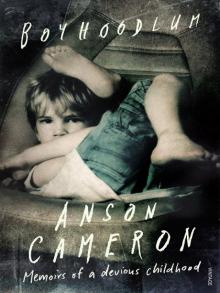 Boyhoodlum
Boyhoodlum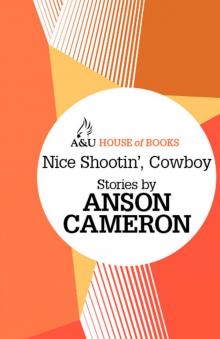 Nice Shootin' Cowboy
Nice Shootin' Cowboy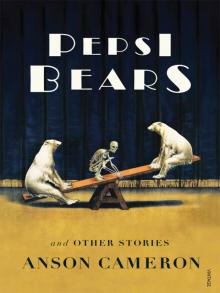 Pepsi Bears and Other Stories
Pepsi Bears and Other Stories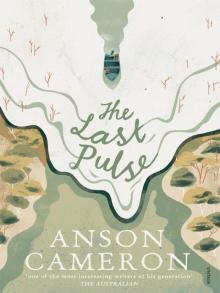 The Last Pulse
The Last Pulse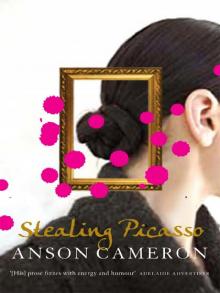 Stealing Picasso
Stealing Picasso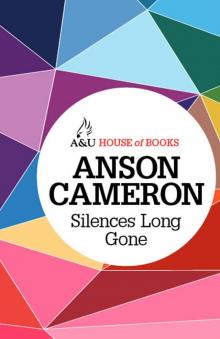 Silences Long Gone
Silences Long Gone